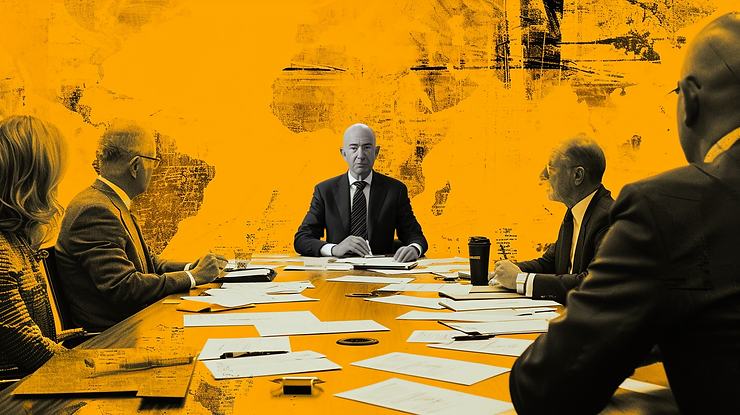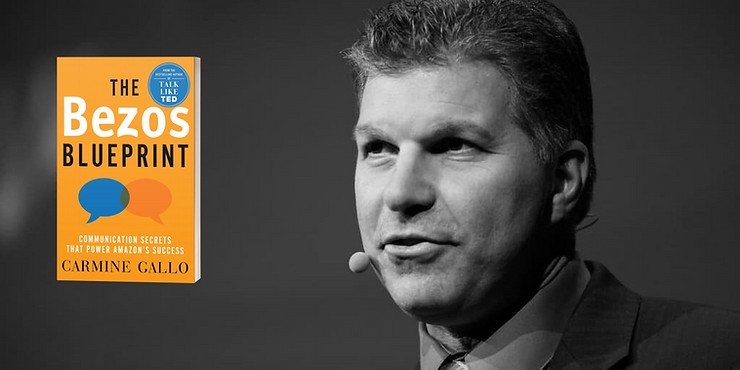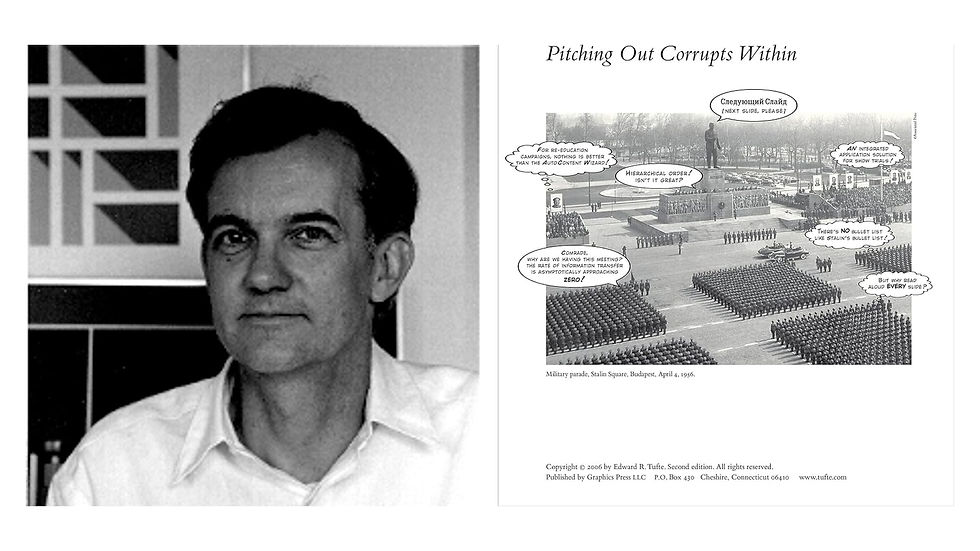Silence, Stories, and Strategies: The Jeff Bezos Method for Transforming Dialogue in the Boardroom
- Visakh Unni

- Aug 20, 2023
- 7 min read
Updated: Jan 29

Personally, I prefer to steer clear of any meetings for which I lack context or preparation. In my line of work, diving into meetings and engaging in brainstorming sessions are crucial. However, a recurrent issue I've noticed is the tendency to squander the initial 20 minutes or so of meetings on explaining the agenda or establishing context. This often results in a monologue, especially when the presenter is simply walking through a PowerPoint presentation on screen share.
Recently, I came across "The Bezos Blueprint" by Carmine Gallo, an insightful exploration of Jeff Bezos's shareholder letters and his unique approach to conducting meetings at Amazon. This book resonated with me, highlighting several challenges I've encountered. In this article, I aim to share and discuss one of the key lessons from the book that I found particularly useful regarding meeting management.

The Problem with traditional meetings
Let's talk about traditional meetings, the kind most of us have experienced at some point. These meetings can sometimes feel like a bit of a struggle, for a few common reasons.First off, meetings can be pretty boring, right? When someone is clicking through a PowerPoint presentation, it's easy to start daydreaming about what's for lunch instead of paying attention. This means people aren't really getting involved or sharing their ideas, which is a missed opportunity. This setup encourages listeners to tune out, transforming what could be dynamic discussions into one-sided monologues.
"The Cognitive Style of PowerPoint" by Edward R. Tufte is one of the first books to tackle the problems associated with PowerPoint presentations.
"By playing around with Phluff rather than providing information, PowerPoint allows speakers to pretend that they are giving a real talk, and the audiences to pretend that they are listening. This prankish conspiracy against substance and thought should always provoke the question, 'Why are we having this meeting?'" -Edward R. Tufte, The Cognitive Style of PowerPoint

Then, there's the problem of meetings dragging on and on. Sometimes it feels like things could have been wrapped up much quicker, but instead, everyone ends up talking about stuff that's not even related to why the meeting was called in the first place. It's frustrating and feels like a waste of time.
Have you ever gone to a meeting and felt like some people just weren't ready to dive into the discussion? That's another issue. When folks come unprepared, the conversation stays pretty shallow, and not much gets accomplished.
And how about when only a couple of people do all the talking? It's like the same voices dominate every time, which means we don't get to hear different ideas or perspectives. It's a bummer because everyone has something valuable to add.
Another thing that can make meetings feel pointless is when you leave without knowing what's supposed to happen next. If there aren't clear steps or actions to take afterward, it feels like you've just wasted your time sitting there.
Also, relying too much on slides and visuals can be a problem. They're supposed to help explain things, but sometimes they just make everything seem too simple or don't really help us understand the big picture.
Lastly, there's this thing called groupthink, where everyone just agrees with each other to avoid conflict, even if it means making a bad decision. It's like going with the flow, even when the flow might be heading towards a waterfall.
The Bezos Way
Bezos made a bold move away from the traditional PowerPoint-laden meetings. Instead, he championed the use of narrative memos, detailed 4-6 page documents designed to explore a topic thoroughly. This wasn't just a preference for prose over slides; it was a strategic decision. By requiring authors to articulate their ideas in narrative form, Bezos ensured that thoughts were not just presented but deeply considered. Imagine the discipline it takes to crystallize complex ideas into clear, concise text. Before any meeting even starts, participants are required to read these memos, guaranteeing a common baseline of understanding—a foundation for fruitful discussion.
Now, picture the scene at the start of an Amazon meeting: a room full of executives, each silently absorbing the contents of a narrative memo. This period of silent reading isn't just about getting everyone "on the same page"; it's an exercise in collective reflection, ensuring that every participant fully digests the information before the discussion begins. It's a moment of calm before the storm of ideas.
This approach naturally leads to a richer understanding of the topic at hand. Narrative memos encourage not just the presentation of facts but the construction of a coherent, logical argument. This depth ensures that when the discussion phase of the meeting begins, it's informed, nuanced, and productive. The narrative structure guides the reader through complex ideas in a way that bullet points never could.
Bezos's focus on having a clear, defined purpose for each meeting aligns with this disciplined approach. By understanding the main takeaway or goal from the outset, participants can engage more effectively, contributing to a focused and purpose-driven discussion. It's about cutting through the noise to what truly matters.
In an emblematic Bezos twist, meetings often featured an empty chair, symbolizing the customer's presence. This wasn't just a symbolic gesture but a constant reminder of Amazon's customer-centric ethos. It ensured that every decision, every discussion, considered the customer's perspective, grounding the company's work in real-world impact.
Small group sizes were another cornerstone of Bezos's meeting philosophy. The "two-pizza team" rule is famous for a reason—it emphasizes efficiency and effectiveness, ensuring that every voice can be heard, and every participant can contribute meaningfully. This size limitation fosters a more intimate, engaging meeting environment where ideas can flow freely.
Diverse perspectives were not just welcomed; they were essential. Bezos encouraged an environment where constructive challenge was the norm, recognizing that the best decisions emerge from a crucible of varied viewpoints. This culture of openness paves the way for innovation and robust decision-making.
Action-oriented conclusions are crucial. Bezos insisted that meetings conclude with clear next steps: actions, responsibilities, and deadlines. This focus on accountability ensures that meetings are not just talk shops but engines of progress, driving forward with clarity and purpose.
Reiterating Amazon's mission and values was a practice Bezos employed to align discussions with the company’s overarching goals. This constant reinforcement served as a compass, guiding strategies and decisions in a direction that supported Amazon's long-term vision.
Lastly, the principle of continuous improvement applied not just to Amazon's products but to its processes, including meetings. By regularly evaluating and refining how meetings were conducted, Bezos ensured they remained effective, efficient, and aligned with the company's evolving needs.Through this, we see how Bezos's approach to meetings was not just about improving efficiency but about fostering a culture of deep understanding, customer focus, and continuous innovation. It's a reminder that meetings, often maligned as productivity black holes, can be transformed into powerful tools for strategic thinking and organizational alignment.
Crafting Narrative Memos
Writing effective narrative memos, as inspired by Jeff Bezos's approach at Amazon, involves a structured, thoughtful process. These memos, unlike any ordinary corporate communication, are not just about conveying information; they're about telling a story, making a case, and engaging the reader deeply with the subject matter.
"Full sentences are harder to write. They have verbs. The paragraphs have topic sentences. There is no way to write a six-page, narratively structured memo and not have clear thinking." -Jeff Bezos
The journey of writing a narrative memo begins with a clear purpose. It's essential to know exactly what you're trying to achieve with this document. Are you informing, persuading, or seeking input? Establishing this from the get-go sets the direction for everything that follows.
Next up, the executive summary. Think of it as the trailer to your blockbuster memo. It should be compelling enough to draw the reader in, providing a snapshot of the memo's main points and the stakes involved. This is where you grab attention and set the expectations.
Organization is key. Your memo should have a clear, logical structure that guides the reader through your argument or story. Whether it's chronological, problem-solution, or another format, each section should build upon the previous one, leading the reader seamlessly through your narrative.Background and context are your memo's foundation. Without overwhelming your audience, offer enough information to bring everyone up to speed, regardless of their familiarity with the topic. This section levels the playing field and ensures all readers are starting from the same place.
Now, identify the core of your memo: the problem or opportunity at hand. This should be a spotlight, clearly illuminating the issue and its significance. Why does this matter? Why now? The clarity here sets the stage for everything that follows.
The heart of your memo is the analysis and supporting data. Dive deep into your topic, backed by solid research, data, and relevant examples. However, remember, the goal is to enlighten, not to overwhelm. Use data to tell the story, highlighting the critical points without getting lost in the numbers.
Exploring alternatives and their implications showcases thorough thinking and anticipates questions. Discuss different paths, weighing their pros and cons. This not only demonstrates comprehensive analysis but also prepares you for counterarguments and questions.
Your recommendation is your memo's crescendo. Based on your analysis, what's the best course of action? Be decisive and clear, providing a compelling rationale for your choice. This is where your narrative comes to its conclusion, offering a clear way forward.But what's a recommendation without a call to action? End your memo with clarity on the next steps. Who needs to do what, and by when? This ensures your memo is not just informative but actionable.
The language you use is the vehicle for your ideas. Opt for simplicity and clarity over complexity and jargon. The more accessible your memo, the wider its reach and impact.
“If you can't explain it simply, you don't understand it well enough.” -Albert Einstein
Even in a business document, storytelling has power. An engaging narrative style can make your memo more memorable and persuasive. Weave facts and data into a narrative that speaks to both the mind and the heart.
Before you hit "send," take the time to review and revise. A fresh set of eyes can offer invaluable perspectives, helping refine your memo to its most effective form.And for those details too rich for the main narrative but too important to omit, attachments or annexes are your friends. They allow the main body of your memo to remain focused and engaging, without losing the depth and support of your research.
Crafting a narrative memo, as pioneered by Bezos, is an exercise in clarity, persuasion, and effective communication. It's about more than just sharing information; it's about engaging your audience, making a case, and driving action.
Here's a video clip I came across online where Bezos himself discusses the modifications they implemented for conducting meetings at Amazon.



Kommentare